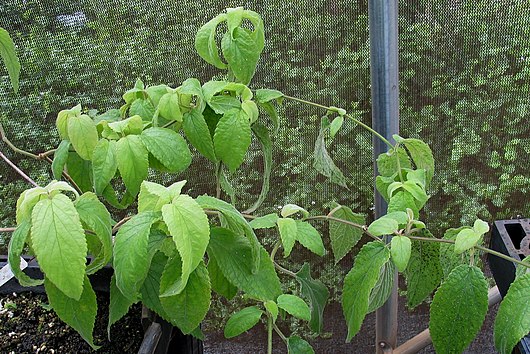Template:Especies-2018-10
Endangered species of the month
editOahu stenogyne
editSome facts about this species:
Appearance: Stenogyne kanehoana is a woolly vine which can reach 1–2.25 meters in length. The dense, furry leaves are up to 14 centimeters long by 4.8 wide. The plant produces tubular flowers which may be over 4 centimeters long. They are white or yellowish with purple-pink lips.
Habitat: Moist hillsides in mountainous regions.
Distribution: This endemic member of the deadnettle family (Lamiaceae) was historically known from three populations, from 560 to 1,170 meters elevation, in the Waianae Mountains of the island of Oahu, Hawaii. The species was said to be extinct in 2000, until one sighting of a plant confirmed it was still alive. The taxon was known from three subpopulations observed in the wild in 2013, but those plants have since died. It is now in ex situ cultivation and some individuals have been reintroduced, however it is considered to have an extent of occurrence of zero km2 because there are no longer any known wild plants in existence.
Reproduction: In 2001 botanists at the Harold L. Lyon Arboretum, University of Hawai’i at Mānoa, discovered that cuttings of this plant can be grown successfully in captivity.
Major threats: The major threats to this taxon include direct competition by invasive non-native plant species (especially Clidemia hirta, Psidium cattleianum and Schinus terebinthifolia) and predation by non-native animals, particularly rats, slugs, feral pigs, feral goats, and feral cattle. It is also ranked as highly vulnerable to climate change, due to loss of habitat.
Conservation status: Listed as Critically Endangered and possibly Extinct in the Wild in 2015 (IUCN v3.1, Criterion D).
First described: Degener, O. & Sherff, E.E. 1941. Additions to our knowledge of the American and Hawaiian floras. Publications of the Field Museum of Natural History, Botanical series 22: 433. BHL
